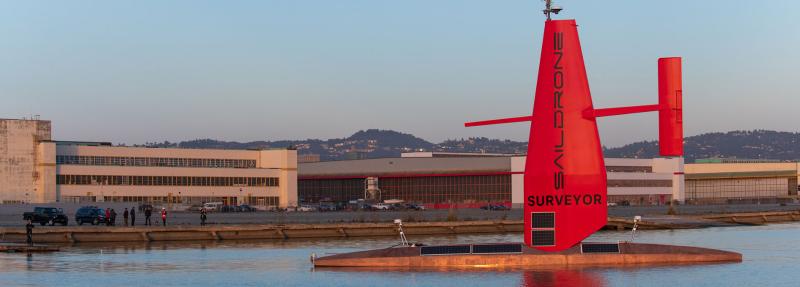 We recently posted video footage shot by a Saildrone uncrewed surface vehicle (USV) from inside Hurricane Fiona, a Category 4 hurricane, barreling across the Atlantic Ocean. For the second year, National Oceanic and Atmospheric Administration (NOAA) and Saildrone have sailed through hurricanes with uncrewed wind-powered vehicles. The sailing drones have also crisscrossed the North Atlantic, the Pacific, and the Bering Sea on a variety of oceanographic missions.
We recently posted video footage shot by a Saildrone uncrewed surface vehicle (USV) from inside Hurricane Fiona, a Category 4 hurricane, barreling across the Atlantic Ocean. For the second year, National Oceanic and Atmospheric Administration (NOAA) and Saildrone have sailed through hurricanes with uncrewed wind-powered vehicles. The sailing drones have also crisscrossed the North Atlantic, the Pacific, and the Bering Sea on a variety of oceanographic missions.
Now, Saildrone is providing its latest and largest sailing drones to the US Navy.
Saildrone and Austal USA are thrilled to announce a strategic partnership designed to meet the rapidly growing demand for Saildrone’s largest class of uncrewed surface vehicles. This new partnership provides the US Navy and other government customers a cutting-edge solution for maritime domain awareness (MDA), hydrographic survey, and other missions requiring persistent wide area coverage.
The 65-foot (20 m) Saildrone Surveyor is designed for deep ocean mapping and intelligence, surveillance, and reconnaissance (ISR) applications, above and below the surface. The Surveyor was developed and designed by Saildrone and will be manufactured exclusively by Austal USA in Mobile, AL. With its industry-leading expertise in aluminum shipbuilding, Austal USA is uniquely equipped to fabricate the Surveyor’s aluminum hulls, ensuring rapid expansion of the fleet.
“We are extremely pleased to enter into this agreement with Saildrone. It is a great fit as both of us are leaders in our respective markets and we both strive to provide leading-edge solutions to the US Navy,” said Austal USA President Rusty Murdaugh. “With our lean manufacturing techniques and serial production capabilities, Austal USA will provide large-scale fabrication of these vehicles and with our partner, Saildrone, rapidly get the capability to the fleet.”
The US Navy is not the only naval force interested in Saildrones. In late August and September, Iranian navy and paramilitary personnel twice attempted to confiscate drones while they were operating in the Middle East. In both cases, the USVs were ultimately recovered by the US Navy.
Saildrone’s CEO says he was unfazed by the events, instead calling the experience “valuable” and stressing the need for any organization operating unmanned ships to anticipate hostile interference.
“It’s an incredibly valuable experience to truly understand what happens in the field with real adversaries,” Richard Jenkins told Breaking Defense in a Sept. 21 interview. “Whether that’s an actual country, whether it’s just a hurricane or a physical adversary, you have to experience it to understand the features.”
